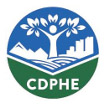Water Test Kit Pro
What’s in your water?
Water Test Kit for PFAS
55 Analytes Tested
EPA 1633
PFOA
PFOS
GenX
PFBA
PFPeA
PFHxA
PFHpA
PFNA
PFDA
PFUnA
PFDoA
PFTrDA
PFTeA
PFPrS
PFBS
PFPeS
PFHxS
PFHpS
PFNS
PFDS
PFDoS
4:2 FTS
6:2 FTS
8:2 FTS
10:2 FTS
FBSA
MeFBSA
FHxSA
PFOSA
FDSA
NEtFOSA
NMeFOSA
FOSAA
NEtFOSAA
NMeFOSAA
NMeFOSE
NEtFOSE
HFPO-DA
ADONA
PFMPA
PFMBA
NFDHA
9Cl-PF3ONS
11CL-PF3OUdS
PFEESA
PFECHS
8Cl-PFOS
3:3FTCA
5:3FTCA
7:3FTCA
FDUEA
FOUEA
6:6PFPi
6:8PFPi
8:8PFPi
N-AP-FHxSA
Test your water source of choice (from your kitchen tap to your well or even surface water). The most comprehensive PFAS test available with a state-of-the-art analysis of 55 PFAS compounds, including all 40 compounds listed under EPA 1633. The Water Test Kit Pro, developed with funding from the National Institute for Environmental Health Sciences (NIEHS), captures PFAS in a DEXSORB®-loaded extraction disk.
$79.00
DEVELOPED BY:

USED BY:



Over 20,000 Samples Tested
Cyclopure’s lab tests for 55 PFAS analytes, including all 40 compounds covered under EPA Method 1633. We measure and quantify PFAS at an LOQ of 1.0 ppt (1 ng/L), the lowest of any commercial lab. We have rated over 96% for consistency in test scoring.

WHY WTK PRO?

HOW IT WORKS

- Fill the collection cup with water.
- Allow it to drain completely.
- Place the cup back into the box.
- Fill out the sample information card.
- Return to Cyclopure using the prepaid shipping label.







